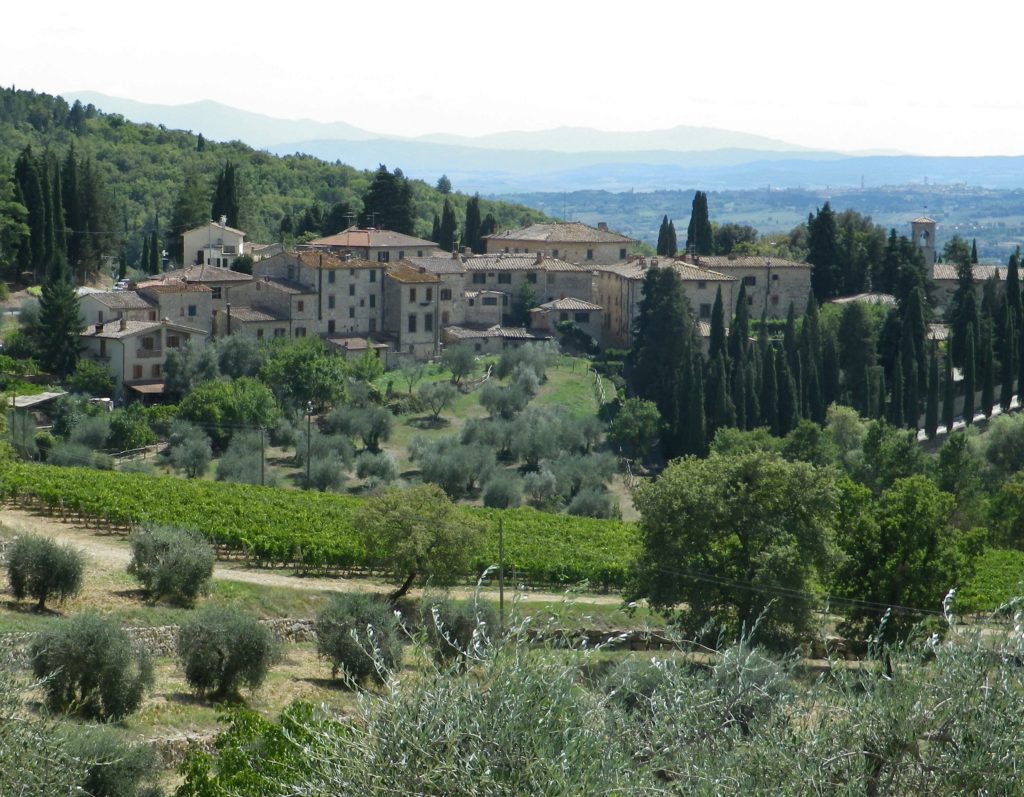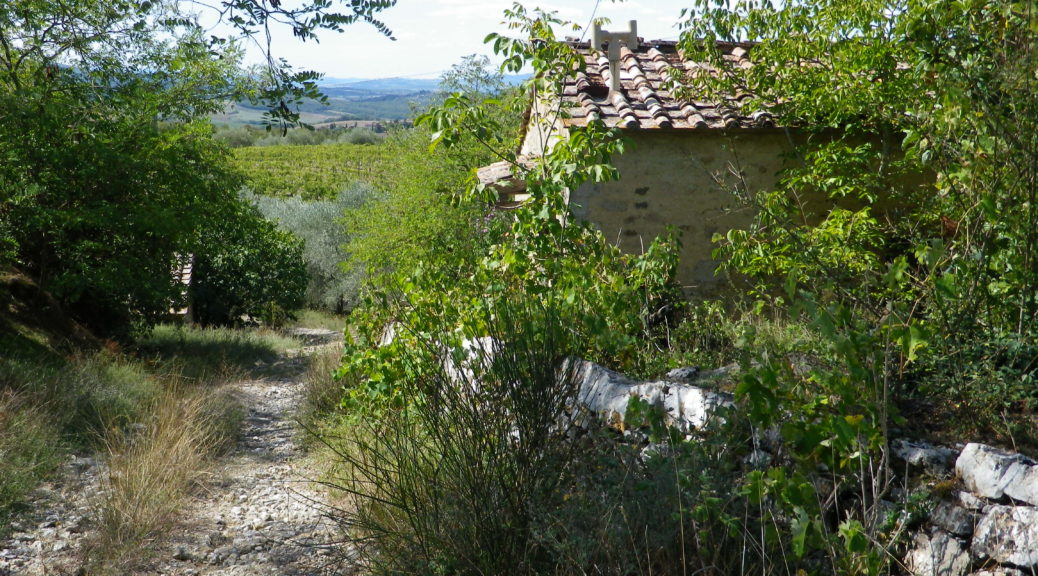The Ring of the Black Rooster
At long last: I found a designated hiking trail in the Chianti region that focused on an area of vineyards and wines outside Castellina in Chianti in the Chianti Classico wine district! Communal or regional trails for wine-lovers are seemingly rare in this corner of Tuscany. So when online research finally produced information about the Anello del Gallo Nero trail, I was eager to hike it, especially as it was named after the Chianti Classico trademark, the black rooster.
A lovely characteristic of the Chianti landscape is its variety. Agriculture here is intensive, not invasive, done on a small scale. Small olive groves are tucked between rows of vines. Fields of grain, small patches of amber in the distance, are scattered throughout. The forests play an integral role as well, providing a wide range of resources from firewood to wild boar, berries, and chestnuts. This manner of resource exploitation has left lots of remote, delightfully hidden corners to explore. Therefore, this hike offered varied landscapes to savor, experience and photograph.
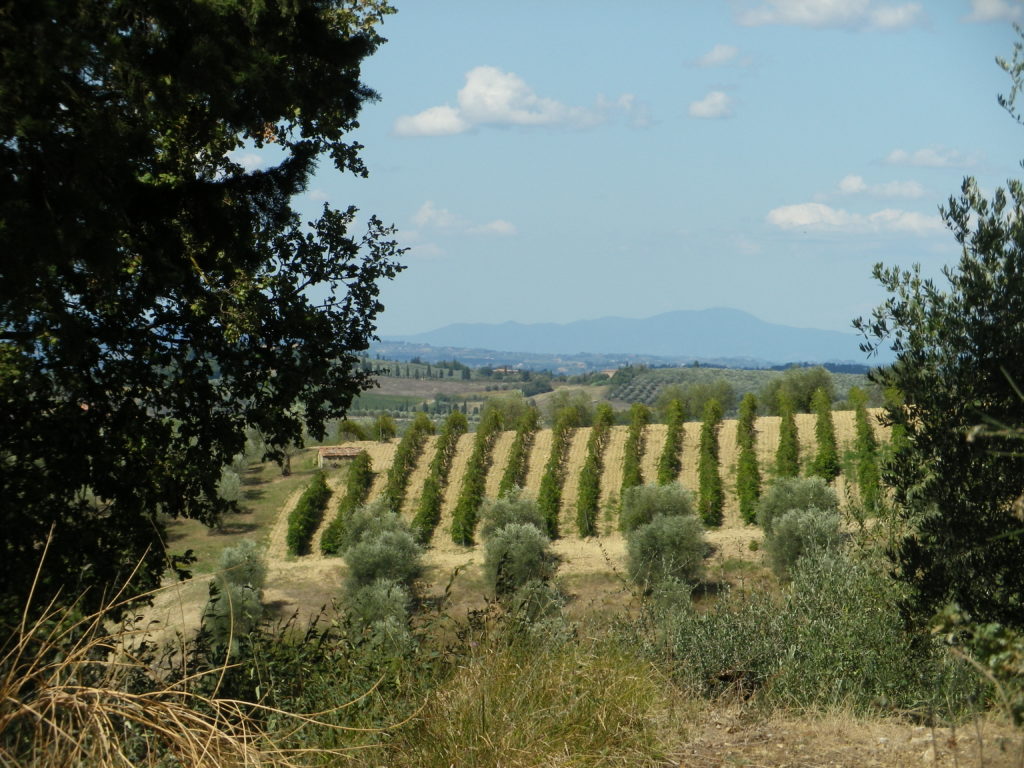
For example, the trail started in a typical hamlet of the region. Fonterutoli (technically a distant outpost of Castellina in Chianti) is a gem of a spot. Set on the top of a rise, its ancient lanes wind to the old church, to the washing hut (dating back over 100 years), and to the site of the “castle” (more like a lovely villa) at the top of the town. Along the lanes, small houses made of stone, each looking older than the previous one, huddle against one and other.
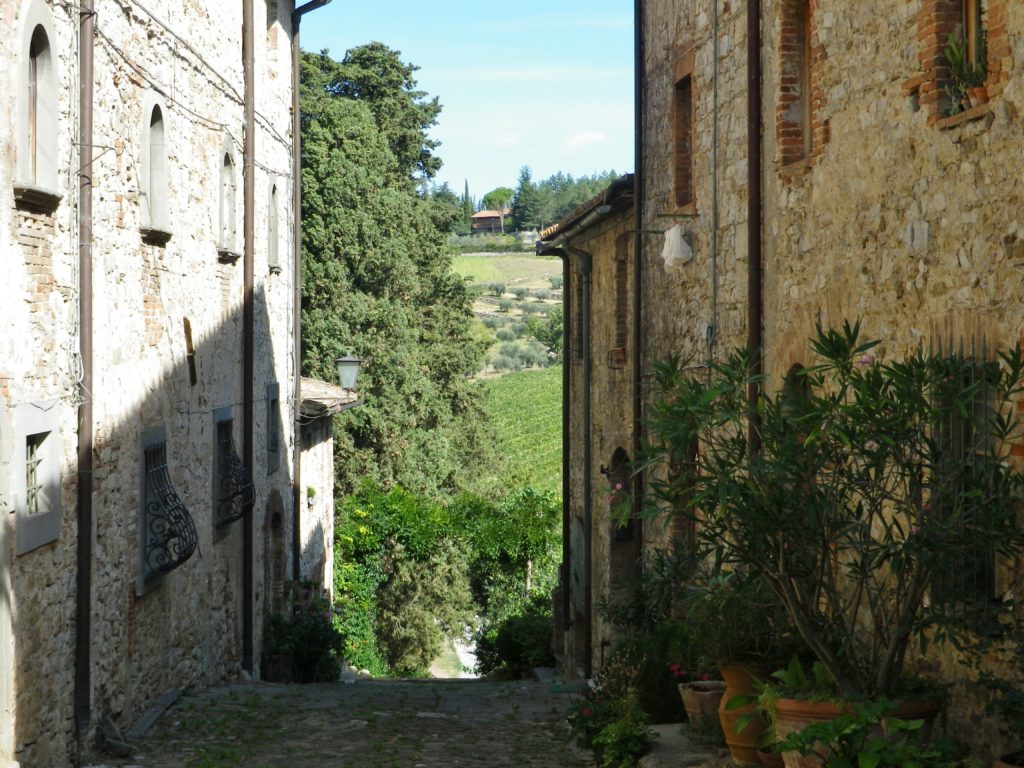
However, a wide expanse of country-side begins just beyond the last house. The trail quickly entered the woods, and provided an opportunity to smell the unique scent of the tall, dark green cypresses lining the trail. Hamlets seen from the trail were completely still, appearing all but forgotten by modern Italy. Some of these hamlets have been bought, and converted into estates, with wine shops, restaurants and accommodation, Casafrassi was one such place, set among small vineyards and olive trees. The trail weaved through this collection of well-maintained buildings. I passed up a wine-tasting opportunity in Casafrassi’s enoteca favor of admiring the view of Monterriggioni, set within its ancient walls.
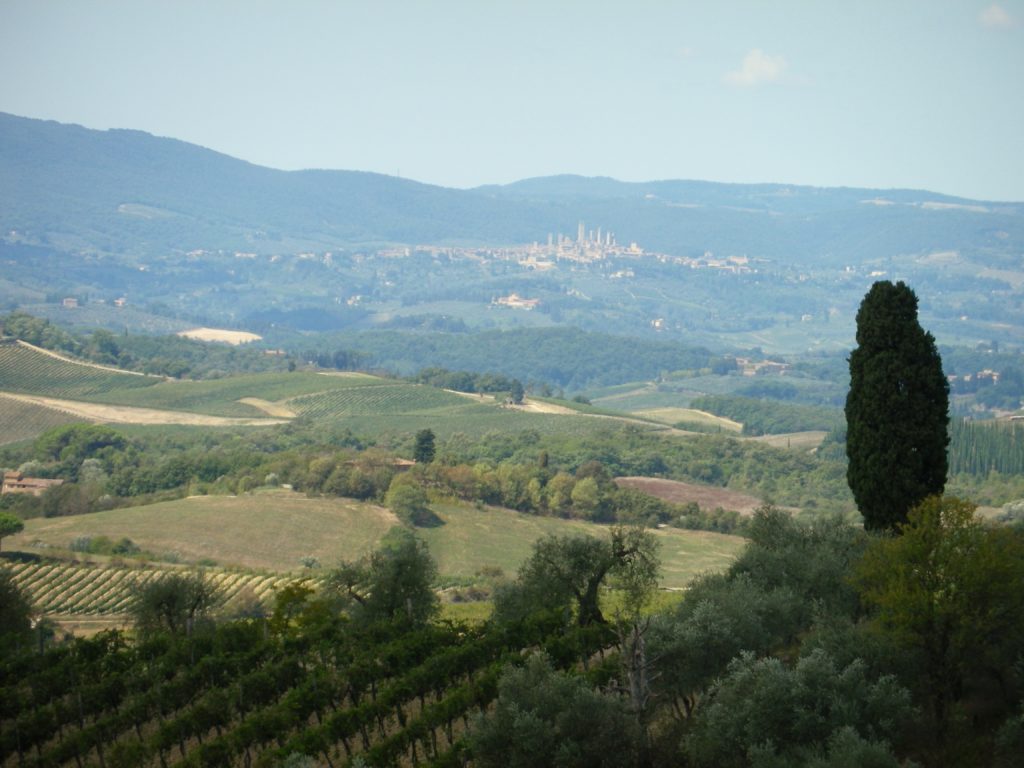
The trail wove through rough woodland downhill to a quiet valley. Vineyards predominated with lines of cypresses here and there marking the road to a house. Skirting east of Topina, yet another hamlet crowning a small hill, the trail followed along a Strada Bianca. These lanes are often used in Italy as bicycling trails by local racing enthusiasts. Usually, they have dirt and gravel surfaces, and are literally “White Streets”.
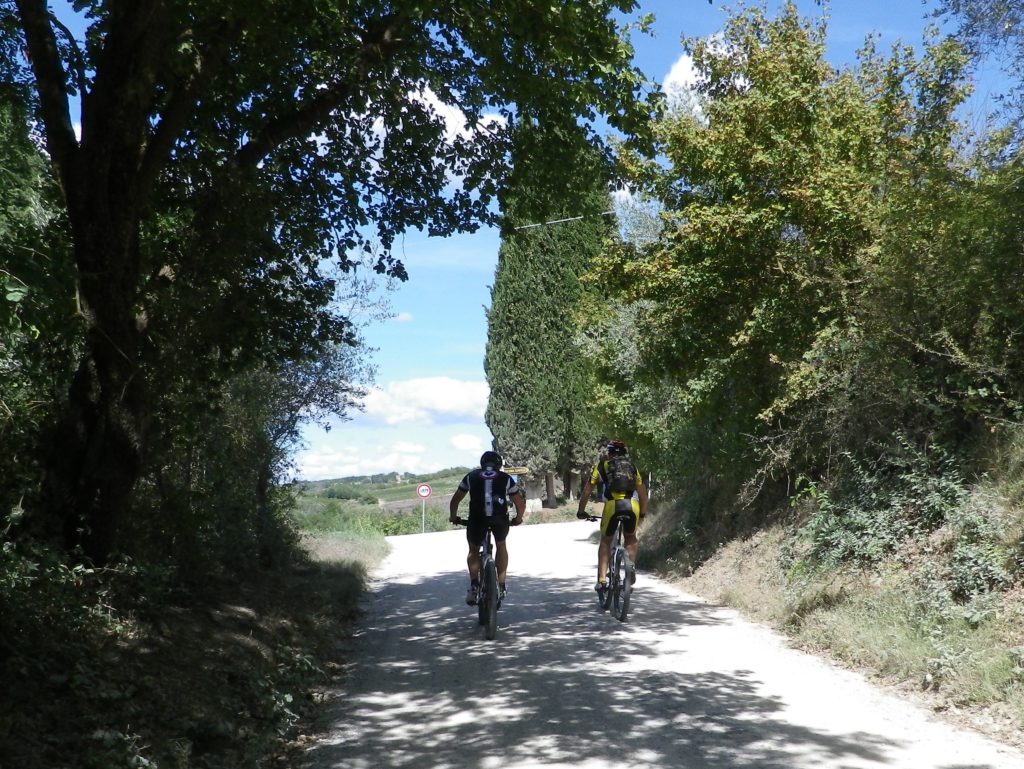
After passing a rest area (no facilities of any sort, but designated nonetheless as a rest area), the trail climbed through the woods to another estate with its olive groves and vineyards. Over the vines, I could see the town of San Gimignano in the distance, its towers bristling against the sky. The trail reentered warm and quiet woodlands, staying here to the hamlet of Fonterutoli. I passed yet another hidden estate with hotel and restaurant. But this building was quite modern looking. Soon I was climbing a cobbled path past the wash hut, and back into the hamlet – Back into a classic setting, after having experienced the wonderful variety of the Tuscan landscape on a unique wine trail.
